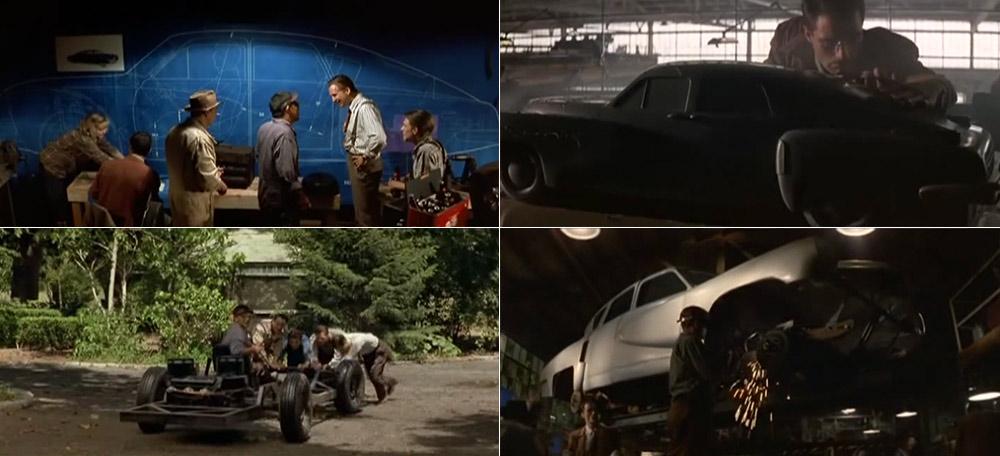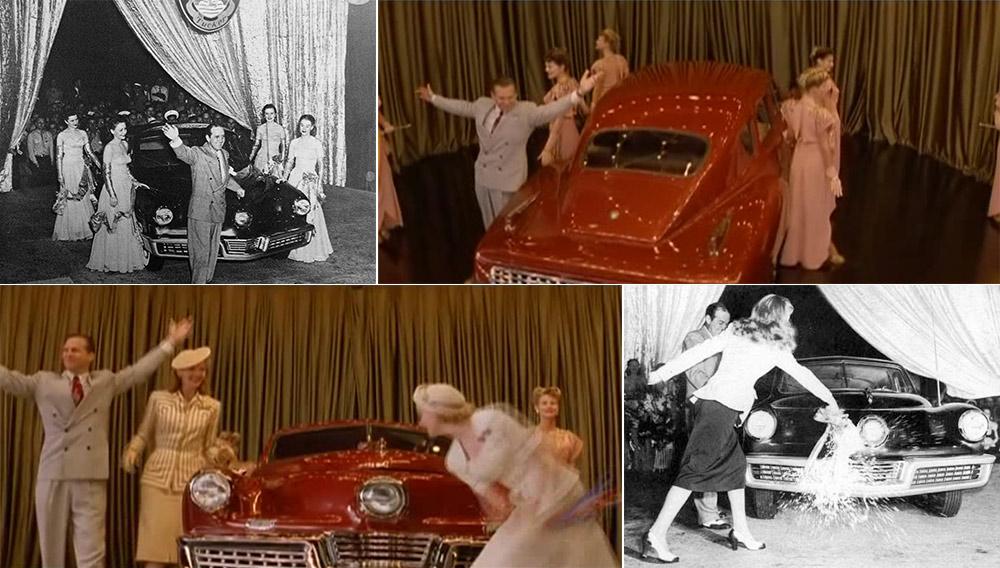The story of the Tucker ’48 automobile is one of the most colorful in the history of motor cars Its creation began in the bright light which awakened mankind from the darkness of World War II.
A lone individual with a passion for improving automotive deisgn gathered a following for a remarkable enterprise. He was not famous to begin with, and is now hardly known at all, yet during the brief period of this saga, his intense belief in his goals attracted and inspired thousand of people.
He was Preston Thomas Tucker, an unlettered engineer intimately acquainted with some of the great names in automotive history. From singularly modest beginnings, he developed his experience into credentials for success, rising to unusual heights.
This is the story of the designing of his dream car, an automobile that proudly joins the ranks of advanced design concepts of automotive history; a car that still fascinates the public forty years later.1
This is the beginning of the introduction1 that Philip S. Egan wrote about Tucker and his car, which he helped designing. The story is about The Man And The Car: Tucker was a real entrepreneur, and The Car That Tucker Built was a real gem for that time.2
The movie shows the design process of the car, lead by Preston Tucker (Jeff Bridges), from the early drawings until the working prototype.



The car had a wide advertisement impact, announcing the Tucker Torpedo (that would later become the Tucker ’48) as the result of “How fifteen years of testing produced the first completely new car in fifty years.”


The add was no longer for a “Torpedo” but simply the “Tucker ’48.” It was somewhat different from the “Torpedo” of a few months before, a bit more conservative.
[...] Within a matter of months, two generations of Tucker automobiles had been presented to the public as fait accompli. The differences in the two advertised Tucker designs were pivotal. [George Lawson and Alex S. Tremulis,] the men responsible for the two generations of the car – which didn’t yet exist – were both highly qualified automotive designers. As I looked over the two difference advertisements, I suspected the divergence of opinion which the two designs represented indicated that Preston Tucker might still be in the process of deciding what the Tucker automobile would finally look like. This proved to be a valid surmise.3
In the Tucker ’48 brochure we can read a few of many new engineering features—rear engine, Tucker ignition, precision balance, individual wheel suspension, frame lower than center line of wheels—and safety features—windshield, steel bulkheads, frame surrounding passenger compartment, cyclops eye, crash board and safety chamber.4

The car briefing was so complex that two design teams were needed: Alex Tremulis’ team as members of the Tucker Corporation and Lippincott Associates for the styling of several parts5. The As it is understadable because of the complexity of the plot, we have to point out that the movie doesn’t reflect this collaboration between teams, but it does show the problems with outside engineering teams (not reflected in P.S. Egan’s book).
Tucker had not only problems with the engineering of the car, but with the whole automotive industry.
Abe – You made the car too good.
Tucker – Well, that’s the whole idea, isn’t it? To build a better mousetrap.
Abe – Not if you’re the mouse.
But against all odds, the car was finally presented:
The sleepless night stretched into morning as last minute preparations continued. The crowds arrived, some 5,000 strong, all impatient to see the car. The Goose at last seemed ready, but Stampli’s pessimism should have been more expansive. The huge Tucker 589 engine had finally been assembled, but testing had barely begun. The specimen engine in the prototype had been run only briefly. When started up it gave out a roar loud enough to raise the dead. Time was pressing hard now, the throng in the improvised auditorium was becoming restless; the show had to go on regardless of the noisy engine.
Tucker ordered the band to play its loudest and to keep the sound level up as the prototype was rolled up to the presentation area and mounted the stage behind the twelve-food courtains. But the music could not cover a new problem. As the engine warmed up, its coolant flowed to the front-mounted radiators and started to boil over.
No one was in any mood to hesitate any longer. Steam or no steam, it was time to go ahead. Gene Haustein, the Tucker test driver, climbed in, and set the transmission lever to “go.” The courtains parted, and the Tin Goose came onto center stage. No one noticed the problems. The Tucker ’48 Tin Goose prototype was gorgeous. Haustein shut the engine down as soon as the car reached center stage, and the crowd, all 5,000, rose to its feet and reared its approval!6

“The Tucker ’48 should present a striking image as it approached and a dramatic impression as it passed.”7 With this two views, the movie ends:

Although only fifty Tuckers were ever produced, forty six of them are still road worthy and in use today. Tucker’s innovations of aerodynamic styling, padded dash, pop out windows, seat belts, fuel injection and disc brakes were slowly adopted by Detroit and are found in the cars you are driving now.
Preston Tucker died of an illness six years after the trial, but his ideas will live forever.
—
1 EGAN, Philip S. Design and destiny : the making of the Tucker automobile. Orange, Calif.: On the Mark, 1989. p.iii.
2 EGAN, op. cit. p.79: “For 1948, the car was distinctly dramatic. Gone were the bulbous, jutting contours of the typical postwar rehashes. Every line seemed to express a cooperation with the air rushing past, allowing smooth passage over the surface with a minimum of disturbance. It was long and low and wide and had not one jot of extraneous protrusion, nor one excess of trim. Its message was even austere.
The look of the car was a commanding vindication to those who styled her: to Alex Tremulis, whose body design had prevailed and succeeded, to the Lippincott crew, who designed the ultimate front and rear and to the perseverance of Preston Tucker.”
3 EGAN, op. cit. p.21-23.
4 EGAN, op. cit. p.83: “In a preliminary meeting with Alex [Tremulis] and me, he [Preston Tucker] demonstrated his zealous concern for safety. His concepts of a safe interior included: a padded crash pad across the top of the dash; all driver controls clustered around the steering wheel area; omission of a panel forward of the front seat passengers to provide a large empty crash pit into which – according to Tucker – a passenger, seeing an imminent collision, could seek safety. Seat belts had occurred to Tucker, but he felt that they would imply something inherently unsafe about the car, that the Tucker ’48 was too vigorous, too fast for anyone’s good.”
5 EGAN, op. cit. p.39. [To Lippincott designers] Preston Tucker gave us this charge: to style the car based upon the essentials of his mechanical concepts and upon Alex Tremulis’ body layout. At no point in the meeting was there any mention of our changing the fundamentals of wheelbase, wheel tread, interior dimensions or even the basic body shape. It was a classic case of pure styling. The primary dimensions were inviolate, as were the tapering roof, and of course, the cyclops eye front and center (we were to have fun with that feature=. Outside these requirements, there were no constraints. We were expected to go all out in our efforts.
6 EGAN, op. cit. p.78.
7 EGAN, op. cit. p.46. Preston Tucker quoted by the author.

